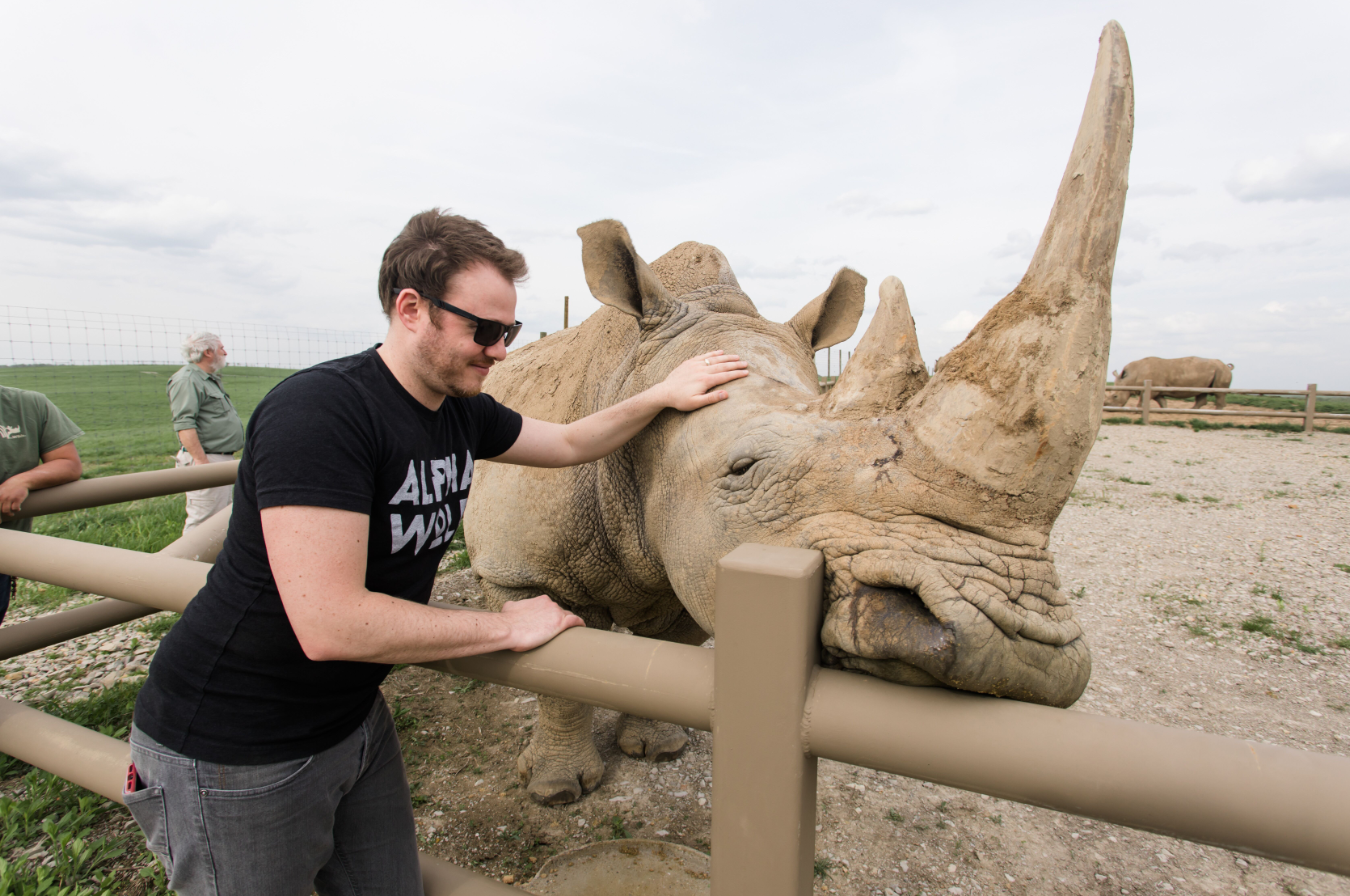
The zoo's other calf named Olmsted or Olmy, born in April, continues to thrive. Noha Abou-Madi from Cornell University College of Veterinary Medicine, for their expert guidance and invaluable input to the care of the calf.” The level of care the calf received was nothing short of exemplary.” Lacy continues, “I would like to also thank our colleagues at Columbus Zoo, Bronx Zoo, and San Diego Zoo, as well as Dr. “Our staff worked around-the-clock doing everything we possibly could to ensure viability. “Our animal health and animal care staff are heartbroken,” said Seneca Park Zoo Director Steve Lacy. “We attempted multiple therapies and explored all options, but the joint continued to be too weak to stand up to the normal stress of movement.” “After consulting with giraffe and veterinary experts at Columbus, San Diego, and Bronx zoos and Cornell University College of Veterinary Medicine, the team made the incredibly difficult decision to euthanize,” says Dr. Unfortunately, he showed no signs of improvement and his overall condition was in decline, according to zoo staff. The calf was placed in a splint on July 12, the day he was born, to assist with walking until the leg was stronger. Chris McKinney, “While some fetlock issues can heal, the calf’s limb abnormality was especially pronounced.” He was increasingly lethargic, nursing less, and showing signs of stress, which indicate decline in the quality of life,” said Dr. “The calf was showing additional signs of degradation. The calf was given constant therapy but it did not help. Zoo veterinarians made the difficult decision to euthanize the male calf after a congenital joint abnormality in his front leg failed to improve. There was sad news for the Seneca Park Zoo and the Rochester community on Friday as zoo officials announced the death of one of their Masai giraffe calves. “This is still a zoological destination,” said Columbus Zoo President/CEO Tom Schmid during the dedication.ROCHESTER, N.Y. This habitat provides us with many opportunities to engage the orangutans mentally while mimicking their natural behaviors.” Orangutans are highly intelligent, and they are extremely curious animals with excellent problem-solving abilities. “The construction and design of this space was truly a labor of love for the Zoo, and so many people from various departments have contributed to making it a successful space for our orangutans. “We are incredibly excited to share this new habitat with the community,” said zoo Curator Audra Meinelt, in a release when the building first opened. The zoo said their diet includes tomatoes, carrots and alfalfa.

They have an arm span of 7 feet and can live more than 30 years. According to Wikipedia, adult males weigh 165 pounds, half that for a female. Now living in the wild only on the islands of Borneo and Sumatra, orangutan is Malay for person of the forest. For the public, there’s several signs that talk about conservation efforts for the three endangered species of orangutans.
#COLUMBUS ZOO NEWS WINDOWS#
The two-story enclosure has plenty of windows to let the light in, metal poles that look like bamboo, firehose to replicate vines, ledges, gadgets and pulleys to provide “enrichment” for the orangutans. “Since they’re arboreal (tree-dwelling), they need that vertical space.” “There’s a lot of bells and whistles to challenge them,” said Columbus Zoo Director of Communications Jen Fields. Previously, they stayed inside during the winter months, and the public couldn’t see them.įor these solitary great apes, they have more opportunities to play in the dayroom. What makes it nice for visitors is they can now see the orangutans all year round, eating, climbing or resting. This new habitat is adjacent to the orangutans’ outdoor habitat. The enclosure actually opened in March, but it wasn’t dedicated until last week. Cooke was the former president of the board of directors. “It’s an honor to have my name on the building,” Borin, the zoo’s president emeritus, said.

On July 29, the building, named the Ken Cooke and Jerry Borin Orangutan Indoor Habitat, was dedicated at the Columbus Zoo and Aquarium. POWELL - Dumplin, Khali and Sulango were serene and industrious as they clambered around in a 1,096-square-foot building made just for them, eating and grasping twigs as tools. A member of the public takes a picture of an orangutan in its habitat at the Columbus Zoo.


 0 kommentar(er)
0 kommentar(er)
